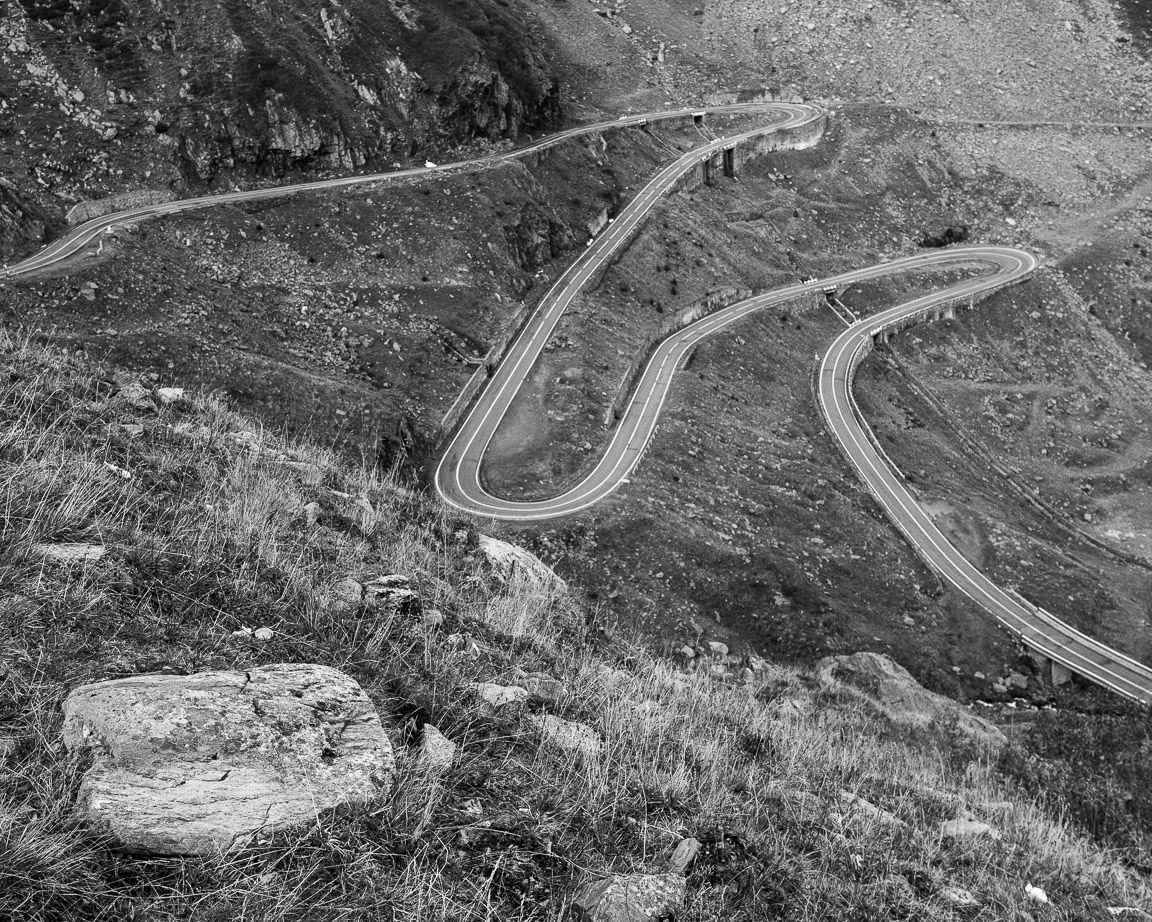October 19, 2018
TRANSALPINA OR TRANSFĂGĂRĂȘAN?
“Of course you could do both.”
The campsite owner smiles.
“Many people do.”
We’re debating the merits of the Transfăgărășan, the road Jeremy Clarkson declared as ‘the best in the world,’ and the Transalpina, an ancient Roman road, repaved and opened to traffic in 2012. Both traverse the Southern Calpathians, the range of mountains that divide central and southern Romania.
He’s right, of course. We pour over pictures in the guidebook. Both roads crawl out of their gently sloping valleys before winding up the sides of sheer mountain passes to an elevation of over 2000 metres. It’s impossible to choose one over the other, they both look stunning.
THE TRANSALPINA
I tackle the Transalpina first. Perhaps my expectations were too high. The route is heavily tree lined and there are too few stopping posts to sample the good views. It doesn’t help that the weather has deteriorated into drizzle. We do manage to find a small gravel patch carved out of a bend in the road. I’m busy taking pictures when I hear footfall below. A man and wife round the corner. They are transporting logs on horse and cart and we stop for a chat. I establish that he doesn’t speak a word of English, neither I Romanian. Nevertheless we have a conversation of sorts, each in our native tongue. We wave each other farewell. Footsteps echo through the canyon as the party slog up the steep, windy road. They round the corner and there is silence. We’re alone on the mountain once more.
BRAN CASTLE
Over the next couple of days the good weather falters. Cold damp mornings and mist prevail, hardly the best way to experience the best road in the world. I take a detour to Bran, home to the famous Disneyesque castle. Contrary to popular mythology, the castle was not the inspiration for Stoker’s novel. It does, however, possess tangential associations with Vlad The Impaler. Sadly, the whole town is a tourist trap with market stalls selling tatty souvenirs cluttering the route to the entrance. I quickly scuttle away and climb the hill opposite the castle where I am rewarded with a small break in the trees from which to take some great pictures of the castle.
BAD WEATHER
I scrutinise the forecast daily. As soon as a fair day is promised, I’m up before dawn to catch the good light at the foot of the Transfagarasan. I park up in the valley and am initially dismayed. Early morning mist prevents any clear shots of the mountains. Disappointment fades when I find a rusting old wreck of a camper van. This pale yellow old tin can, choking in thick, heavy mist, provides a beautiful transition between the burnt out summer grass and the impending warm orange sun. I feel rewarded for my 5:30am awakening.
TRANSFĂGĂRĂȘAN
The Transfăgărășan is stunning, an honour to the hundreds of people that died during its construction. Rumour has it that Ceaușescu initiated the project to surpass the achievement of the Transalpina. Regardless of the dubious origins of its birth, the result is incredible. The north section of the road resembles a Grand Prix racing track. Hairpin turns and S-bends loop up the side of the hills at impossible angles. Bâlea Lake is the reward. It sits at the apex of the mountain, a sparkling teal gem. Once thriving hotels, now abandoned until spring, reflect off the mirror-like surface. The dense forest is a surrounding cocoon, enclosing everything in its yellowing leaves.
TRANSYLVANIA
Transylvania is a magical place and I feel lucky to have explored the area. It possesses everything from affluent cities, to pretty little towns, and poor villages with only wells to provide water. The countryside is stunning, a rugged, harsh beauty much like the Yorkshire Dales or the Scottish Highlands. I’m no Royalist but I am with Prince Charles on this one when he says that “We, the rest of the world, have something to learn from this cultivated landscape of Transylvania. They have a spiritual but also social, economical and ecological significance.”










